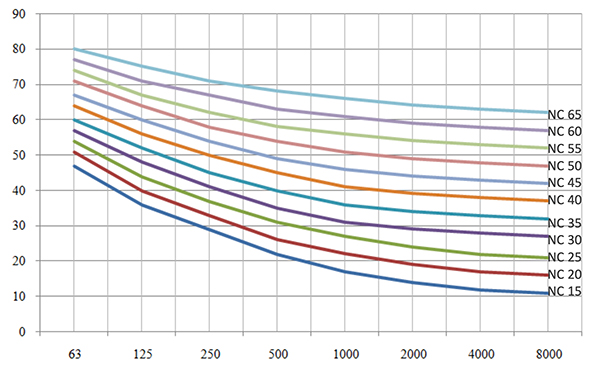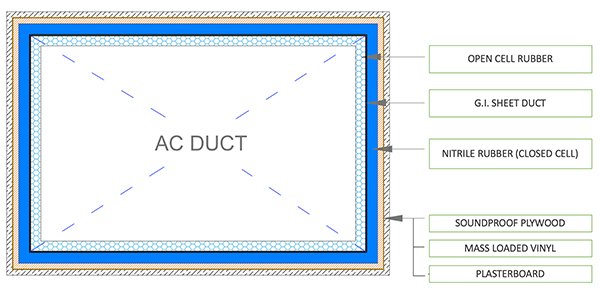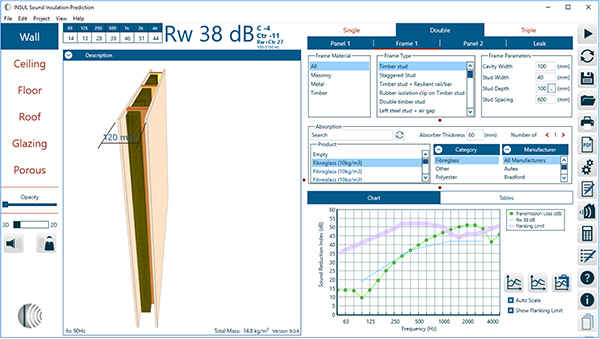Acoustic and Audio System Design for Small Rooms - Part 2
By - Rahul Sarma, CEO, Menura Acoustic Labs
In collaboration with Sound Wizard

In part 1 of this series we defined a small room, introduced the concept of sound waves as they relate to phase shift and comb filtering, and even touched on the Haas (precedence) effect. In this article, we will talk about an important design consideration that is often an afterthought. Sound isolation is usually looked at when there are known external sources of noise like traffic and diesel generators, or when there is an important reason to prevent sound leakage out of a space. There is an equally important reason to consider isolation, and it goes by the term “dynamic range”.
Dynamic Range
Ever watched a movie in your living room, and the dialogue in a quiet scene is completely unintelligible? You grab the remote and increase the volume until you can finally understand what is going on, and you settle back into your couch, ready to enjoy the movie again. A super loud gunshot or crash suddenly has you scrambling for the remote again, rushing to reduce the volume before your ears bleed or you wake up the dead! More likely than not, you were initially forced to increase the volume to drown out some background noise, either from a nearby construction site, traffic, or even other people in your own house. That background noise created a noise floor that adversely impacted the dynamic range of the audio playback. Simply put, dynamic range is the level difference between the softest sound and loudest sound in a recording. Increasing the volume restored the dynamic range by bypassing the noise floor, but the upper limit of the dynamic range became too loud to handle. Sound isolation is the key to suppressing the noise floor, and figuring out how much to isolate begins with quantifying background noise.

Fig.1: Noise Criteria Curves
Noise Criteria
Noise Criteria is a simple and standardized way to evaluate the background noise level in a space. It takes into account the fact that not all sources of noise are broadband, and can be obtained by super-imposing a measurement in dB(A) of background noise over the graph seen below.
The highest NC curve that intersects the measured levels at any frequency determines the final NC level. Recording and broadcast studios require NC 15-20 background levels, while an NC level as high as 25 can be acceptable in auditoriums. Please note: the NC number has little correlation with average dB(A) levels. Also, NC 20 does not equate to 20 dBA. A narrow band 63Hz tone measured at 50dBA corresponds to NC20, so to reiterate; do NOT confuse NC with dB(A). To properly understand why the NC curves are shaped the way they are, look up “Fletcher-Munsen curves”. A simplified explanation is that human hearing is less sensitive at lower frequencies, and hence we are less affected by lower frequency noise. Before we explore techniques to isolate a space from outside noise, it is important to understand that sources of noise within “small” rooms can sometimes be more detrimental than those outside it.

Fig.2: AC Duct Isolation Treatment
HVAC Noise
Air conditioning and ventilation are vital in acoustically isolated spaces and must be given importance during the design process. Central air conditioning is usually the best (and sometimes only) way to ensure low noise levels in your space, since noisy ac units can be located far away from the listening positions. Larger ducts reduce the velocity of air and hence lower the noise from turbulence, and open cell rubber inside the ducts can help a great deal in reducing sound transmission through ducts. Sharp turns in ducts must be avoided to prevent an increase in self noise. Ducts themselves can be hung using ceiling hanger isolators, preventing structural vibrations that are often significant sources of noise. The following diagram is an example of layers and materials you might use to contain duct noise. There are a few different ways to achieve the same isolation, and software prediction can help greatly in this regard.
Room Isolation
For critical audio applications, proper room isolation is a requirement. The mass law states that the airborne sound insulation of a single-layer partition is directly proportional to the mass per unit area of the partition. Solid concrete walls do a great job of isolation, and thin single layer wooden partitions do the opposite. The downside of a single layer partition is that every material has a resonant frequency, for which sound waves will pass through the layer easily. Composite layers made up of materials with different densities can help address this issue. To address structural noise transmission, it is important to decouple layers. Heavy duty resilient isolators can be used to this end, enabling acousticians to create “floating shells” which essentially form a “room within a room”. Any rigid links between the inner and outer layers will severely compromise isolation through flanking transmission.

Fig.3: Software Predicted Sound Isolation
Software solutions like INSUL by Marshall Day Acoustics can be an invaluable tool to accurately estimate transmission loss of various materials, while also accounting for flanking losses in the real world.
Finally, it is extremely important to consider the “air-tightness” of a room. Isolation is only as effective as the weakest links, which are usually found in the gaps around doors and windows, electrical outlets and AC inlets and outlets. Even the smallest crack in a layer can compromise the isolation of a room, pouring your entire investment in isolation down the drain.